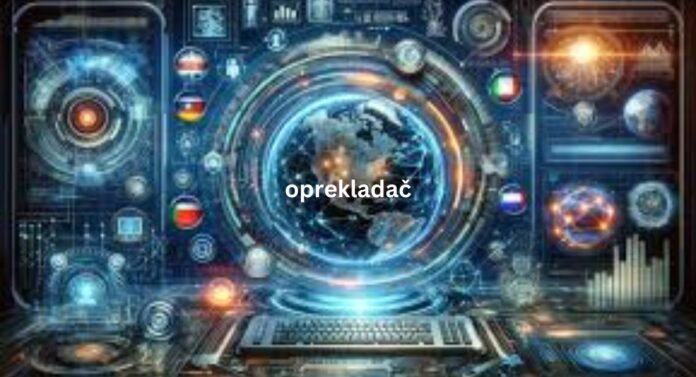Introduction
Oprekladač is an online tool which is on purpose for language translation. It gives the user the ability to translate text to another language with a lot of ease and efficiency. This article outlines Oprekladač as the international variant; its features, advantages, possible applications; and answers to some of the most common questions.
What is Oprekladač?
It is a word that originates from the group of Slavic language, its main meaning is interpreter or translator. However in the aspect of technology, it has extended to include a wider range of operations that are automatic in nature and perform roles that were done manually by workers. Consequently, This systems rely on algorithms, machine learning and natural language processing in making decisions and automating various processes which regarding from simple repetitive tasks to strategic decision making processes.
Evolution of This Technology
The concept of oprekladač finds its roots in early automation systems, where simple machines were used to automate repetitive tasks. With advancements in computing and artificial intelligence, the capabilities of oprekladač systems have expanded significantly.
Key Components of an Oprekladač System
A typical oprekladač system consists of the following core components:
- Input Interface: This component enables the system to receive data or instructions from various sources, such as sensors, cameras, microphones, or human operators.
- Data Processing Unit: The central processing unit analyzes and processes the input data, applying algorithms and machine learning models to extract relevant information and make decisions.
- Output Interface: This component facilitates the system’s response or action, such as controlling machinery, generating reports, or communicating with other systems.
- Control System: The control system oversees the overall operation of the oprekladač, ensuring smooth execution of tasks and coordination between different components.
Applications
Oprekladač systems have a wide range of applications across various industries:
- Manufacturing: This robots and automated systems perform tasks such as assembly, welding, and quality control, improving productivity and reducing labor costs.
- Logistics: This systems optimize warehouse operations, manage inventory, and automate transportation processes, enhancing supply chain efficiency.
- Healthcare: This systems assist in medical diagnosis, drug discovery, and patient monitoring, improving healthcare delivery and patient outcomes.
- Customer Service: This chatbots and virtual assistants provide customer support, answer inquiries, and resolve issues, enhancing customer satisfaction.
- Finance: This systems analyze financial data, detect fraud, and automate trading processes, improving risk management and investment performance.
Benefits of This Technology
The implementation of oprekladač systems offers numerous advantages:
- Increased Efficiency: Automation of repetitive tasks leads to faster production cycles and reduced labor costs.
- Improved Accuracy: This systems can perform tasks with greater precision than humans, reducing errors and defects.
- Enhanced Consistency: Automated systems maintain consistent performance and output quality, ensuring reliable results.
- 24/7 Operation: This systems can operate continuously without fatigue, maximizing productivity.
- Data-Driven Decision Making: This systems can collect and analyze vast amounts of data, enabling informed decision-making.
Challenges and Considerations
While this technology offers significant benefits, it also presents certain challenges:
- Initial Investment: The development and implementation of this systems can require substantial upfront costs.
- Job Displacement: Automation may lead to job losses in certain sectors, necessitating workforce retraining and upskilling.
- Cybersecurity: It systems must be protected from cyberattacks to ensure data security and system integrity.
- Ethical Considerations: The use of this technology raises ethical questions related to autonomy, accountability, and bias.
FAQs
Q: What is the difference between this and artificial intelligence?
A: It is a broader term that encompasses various automated systems, while artificial intelligence is a subset of this technology that focuses on developing intelligent agents capable of learning and problem-solving.
Q: Are this systems safe to use?
A: It systems are generally safe when properly designed, tested, and maintained. However, like any technology, they carry inherent risks that must be carefully managed.
Q: Will this technology replace human jobs?
A: While automation may lead to job displacement in some areas, it is also expected to create new job opportunities in the development, maintenance, and management of this systems.
Q: How can I learn more about this technology?
A: There are numerous resources available to learn about this technology, including online courses, books, articles, and conferences.
Conclusion
It is applying its technology at a blinding speed to industries and revolutionising how we conduct our business, how we live. Thus the ability to grasp everything that is going on in the oprekladač systems world and use it to unleash a storm of innovation and productivity breakthroughs should be commended as the key to a better future.

